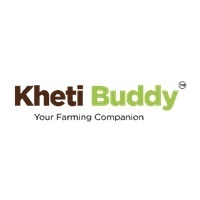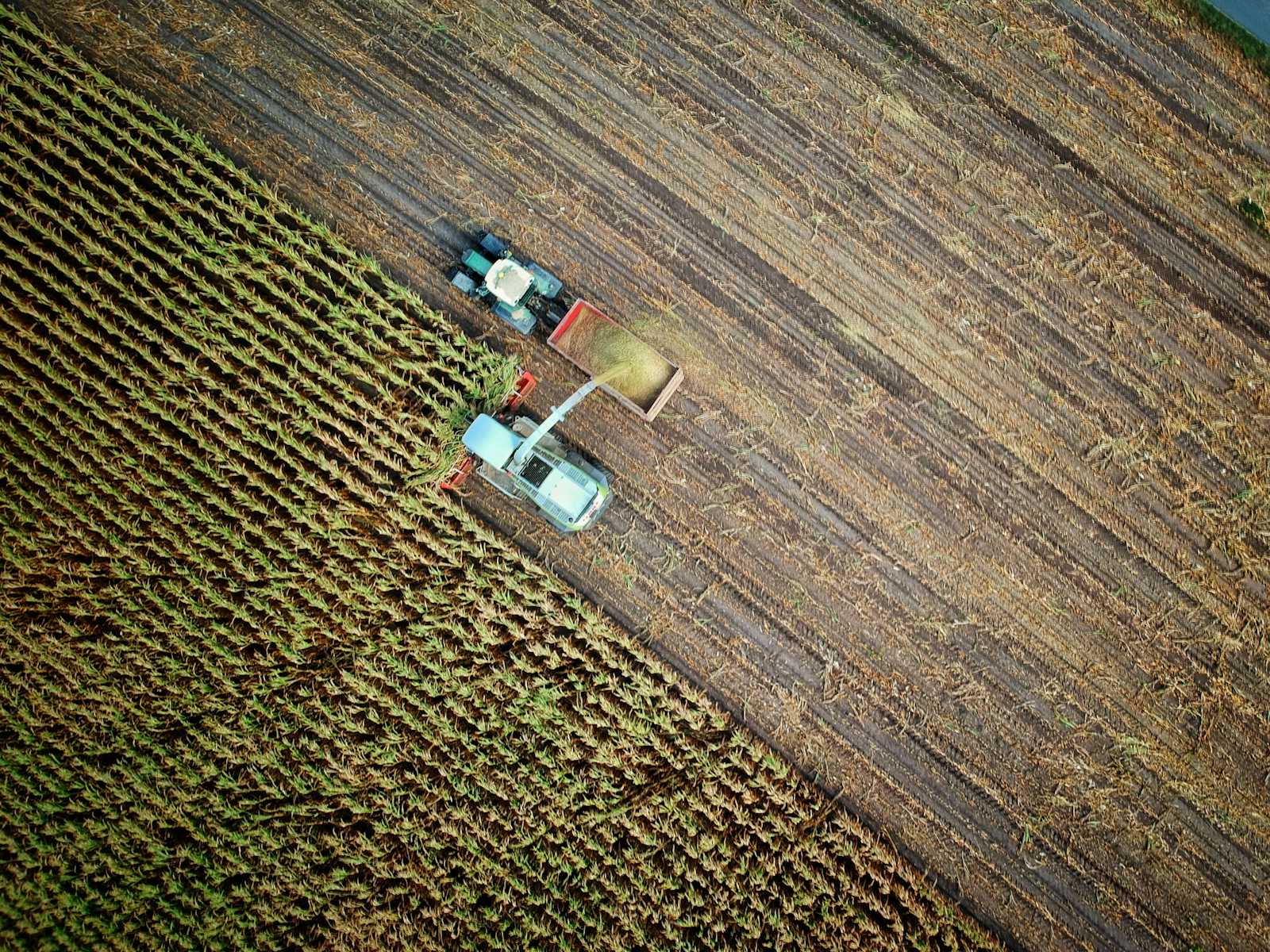7 Tips for Eco-Friendly Sustainable Farming Solutions
 Kheti Buddy
Kheti Buddy
As the world becomes increasingly concerned about environmental degradation and climate change, sustainable farming has emerged as a vital answer for guaranteeing food security while protecting the environment. Khetibuddy who promotes regenerative farming practices can reduce their environmental impact, boost biodiversity, and contribute to the long-term health of our ecosystems. Below are seven practical recommendations for establishing sustainable farming solutions that protect the environment and promote agricultural productivity.
1. Embrace Organic Farming Practices
Organic farming is a very effective technique for achieving sustainability in agriculture. Organic farming promotes biodiversity, reduces the risk of water pollution, and helps to maintain soil health by eliminating synthetic fertilizers and pesticides. Farmers can use compost and green manure to naturally enrich the soil and maintain ecological health. Crop rotation, intercropping, and the use of cover crops are essential strategies for promoting soil fertility and pest management without the use of damaging chemicals.
Benefits of Organic Farming
Enhanced Soil Fertility: Organic practices improve soil structure, water retention, and nutrient cycling, leading to healthier crops and higher yields.
Biodiversity Conservation: By reducing chemical inputs, organic farming supports diverse plant and animal species, contributing to a balanced ecosystem.
Reduced Carbon Footprint: Organic farming often requires less energy and emits fewer greenhouse gases than conventional farming, making it a key player in climate change mitigation.
2. Implement Integrated Pest Management (IPM)
Integrated Pest Management (IPM) is a comprehensive method utilizing biological, cultural, physical, and chemical methods to control pests in an environmentally friendly manner. Rather than relying essentially on pesticides, IPM focuses on researching pest behavior, monitoring pest populations, and implementing tailored treatments to reduce harm.
Key IPM Strategies
Biological Control: Utilize natural predators, parasites, and pathogens to keep pest populations in check.
Cultural Practices: Implement crop rotation, sanitation, and resistant crop varieties to prevent pest outbreaks.
Mechanical and Physical Controls: Employ traps, barriers, and hand-picking to reduce pest numbers without chemicals.
By reducing the reliance on synthetic pesticides, IPM not only protects the environment but also promotes the health of farm workers and consumers.
3. Conserve Water Through Efficient Irrigation
Water is an important resource, and sustainable farming needs to prioritize its conservation. Efficient irrigation systems, such as drip irrigation and sprinklers, may substantially decrease water consumption by delivering water directly to plant roots, reducing evaporation and runoff. Farmers could also use rainwater obtaining and soil moisture management techniques to enhance the utilization of water. Advantages of Water Conservation
Reduced Water Waste: Efficient irrigation ensures that water is used where it is needed most, preventing overwatering and conserving resources.
Improved Crop Yields: By providing consistent and adequate moisture, farmers can achieve better crop growth and higher productivity.
Environmental Protection: Reducing water consumption helps preserve local water bodies and supports the overall health of aquatic ecosystems.
4. Promote Soil Health with No-Till Farming
No-till farming is a sustainable strategy that minimizes soil disturbance through the elimination of traditional plowing methods. Instead, seeds are planted straight into the soil, leaving crop remains on the surface to avoid erosion and moisture loss. This method enhances soil structure, supports the growth of beneficial microbes, and minimizes the need for chemicals. Benefits of No-Till Farming
Erosion Prevention: By leaving the soil undisturbed, no-till farming reduces the risk of soil erosion caused by wind and water.
Carbon Sequestration: The undisturbed soil can capture and store more carbon, contributing to the fight against climate change.
Lower Input Costs: No-till farming often requires less fuel and labor, making it a cost-effective solution for sustainable agriculture.
5. Foster Biodiversity with Agroforestry
The planting of trees and shrubs into agricultural landscapes to establish a resilient and variety ecosystem is known as agroforestry. By providing various species' habitats, boosting soil fertility, and protecting crops from environmental stresses, this approach promotes biodiversity. Alley cropping, which produces crops in between rows of trees, and silvopasture, which combines trees with cattle grazing, are examples of agroforestry systems.
Agroforestry Benefits
Enhanced Resilience: The presence of trees in agricultural fields can buffer crops against extreme weather events, such as droughts and storms.
Improved Soil Health: Tree roots help stabilize the soil, reduce erosion, and increase organic matter content.
Economic Diversification: Agroforestry can provide additional income streams through the sale of timber, fruits, and other tree-based products.
6. Utilize Renewable Energy Sources
The adoption of renewable energy in farming operations is crucial for reducing the carbon footprint and achieving sustainability. Solar panels, wind turbines, and bioenergy systems can power irrigation pumps, machinery, and processing facilities, reducing reliance on fossil fuels. Moreover, using renewable energy can lower operational costs and make farms more resilient to energy price fluctuations.
Renewable Energy in Farming
Solar Energy: Install solar panels to generate electricity for farm operations, reducing energy bills and carbon emissions.
Wind Energy: Utilize wind turbines to harness wind power for electricity generation, especially in regions with consistent wind patterns.
Bioenergy: Convert agricultural waste into biogas or biofuels, providing a sustainable energy source and reducing waste disposal costs.
7. Practice Sustainable Livestock Management
Sustainable livestock management involves adopting practices that minimize environmental impact while ensuring animal welfare. This includes rotational grazing, which prevents overgrazing and promotes healthy pasture growth, as well as reducing greenhouse gas emissions through dietary adjustments and waste management strategies.
Key Livestock Management Strategies
Rotational Grazing: Move livestock between pastures to allow forage plants to recover, improving soil health and reducing erosion.
Feed Efficiency: Optimize livestock diets to enhance nutrient absorption and reduce methane emissions.
Manure Management: Implement waste management systems, such as composting or anaerobic digestion, to reduce nutrient runoff and generate renewable energy.
By prioritizing animal health and environmental stewardship, sustainable livestock management contributes to the overall sustainability of farming operations.
Conclusion
Adopting Khetibuddy sustainable farming solutions is essential for the future of agriculture. By implementing practices such as organic farming, integrated pest management, efficient irrigation, no-till farming, agroforestry, renewable energy utilization, and sustainable livestock management, farmers can protect the environment while maintaining productivity. These practices not only contribute to a healthier planet but also ensure the long-term viability of farming operations.
Subscribe to my newsletter
Read articles from Kheti Buddy directly inside your inbox. Subscribe to the newsletter, and don't miss out.
Written by
